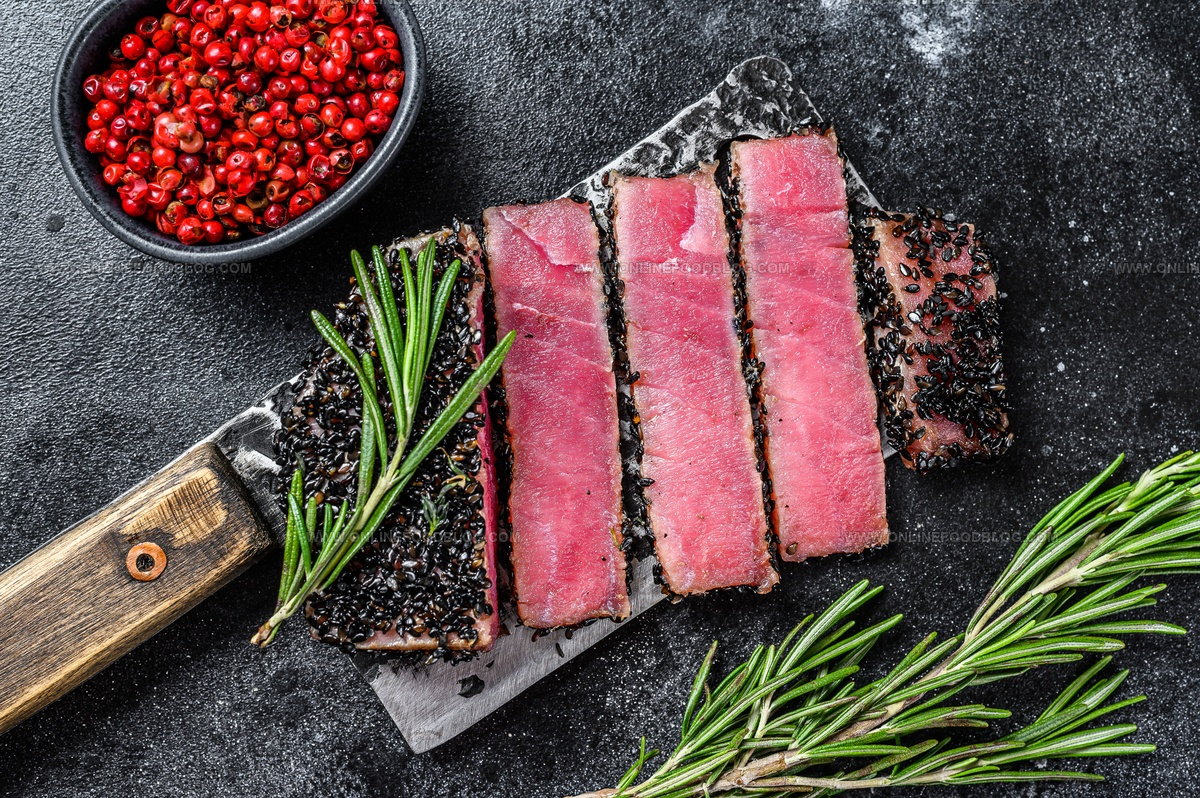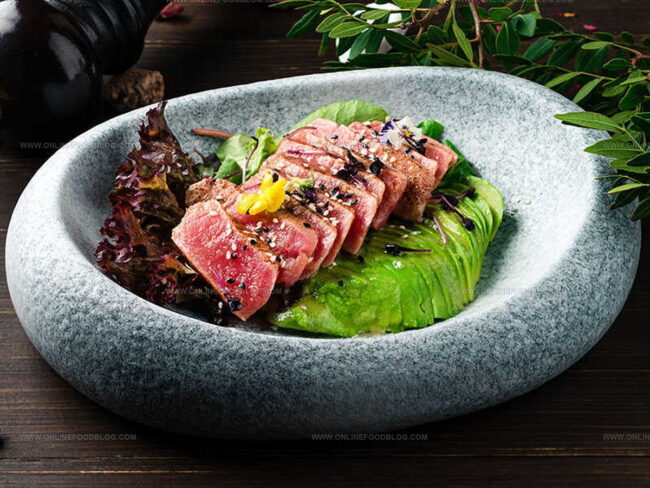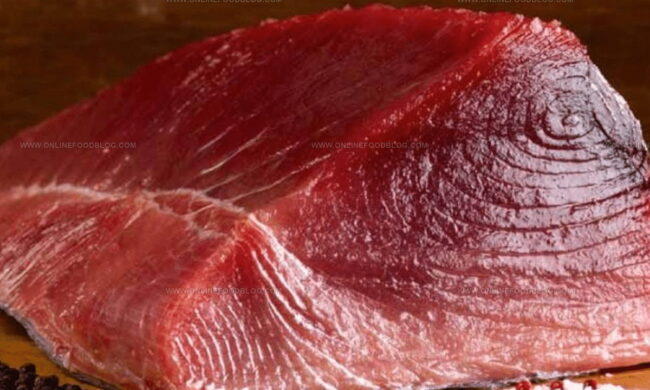What Does Ahi Tuna Taste Like? Flavor Trip to Ocean Riches
Ahi tuna, a prized fish in culinary circles, sparks curiosity among food enthusiasts seeking to understand its unique flavor profile.
Sushi lovers and seafood adventurers often wonder about the sensory experience this Hawaiian delicacy offers.
Pacific waters nurture these magnificent fish, creating distinctive characteristics that set them apart from other seafood options.
Chefs worldwide celebrate ahi tuna for its remarkable versatility and potential to transform simple meals into extraordinary culinary experiences.
Texture and taste play crucial roles in making this fish a favorite among professional and home cooks alike.
Understanding the nuanced qualities of ahi tuna can elevate your dining experience and expand your gastronomic knowledge.
Dive into this article to unravel the delectable mysteries of this exceptional fish and learn why it has become a sought-after ingredient in modern cuisine.
What Is Ahi Tuna?
Ahi tuna is a type of tuna that includes two main kinds: yellowfin and big eye.
Yellowfin tuna has a mild taste and firm meat, making it great for sashimi and poke bowls.
Big eye tuna is richer, creamier, and has a smooth texture that’s perfect for grilling or searing.
Chefs and sushi lovers both enjoy ahi tuna for its taste and quality, but it’s usually less expensive than the more rare bluefin tuna.
You can find ahi tuna, either fresh or frozen, in most grocery stores or local fish markets without much trouble.
It’s a popular pick for anyone who loves seafood with a hearty, satisfying flavor.
What Does Ahi Tuna Taste Like?
Cooking methods play a key role in bringing out ahi tuna's unique taste, which can shift from subtle to strong based on how it's prepared.
Ahi tuna boasts a smooth feel, with flavors staying mild and rich when grilled carefully or served raw.
Cooking it to medium might result in a less appealing taste that feels like eating cardboard.
Paying close attention to cooking time matters greatly when making ahi tuna.
Fish cooked too long can turn tough and develop an unpleasant taste.
Selecting the right cooking approach helps maintain the fish's natural qualities.
Careful preparation ensures the best results, with ideal cooking keeping the fish tender and flavorful.
Overcooking leads to a dry, rough texture that ruins the fish's delicate nature.
Why Choose to Cook Ahi Tuna?
Here's why you should consider adding ahi tuna to your meal lineup.
This fish offers amazing flavor and works well in many dishes.
Ahi tuna tastes great when prepared simply and can shine in multiple meal styles.
Preparing this fish opens up countless meal options.
Whether you want to enjoy it alone, mix it into a salad, or create something more complex, ahi tuna provides flexibility for home cooks.
Meal ideas that showcase ahi tuna include:
Steak Style Cut
Grilled ahi tuna works best when treated like a beef steak.
Careful cooking keeps the fish tender and juicy.
Overcooked tuna loses its delicate texture, which makes it special.
Watching the heat and timing helps preserve the rich flavor and smooth feel of this tasty fish.
Tacos De Pescado
Seafood lovers can whip up mouthwatering fish tacos using ahi tuna. Ahi tuna pairs wonderfully with classic taco ingredients like:
Mixing tropical pineapple salsa with ahi tuna creates an incredible flavor combination that takes these tacos to another level.
Salad
Slender ahi tuna slices can turn an ordinary salad into something special.
Tender fish works wonderfully with classic salad ingredients, including crisp vegetables, sweet dried fruits, crunchy nuts, small seeds, and zesty dressings.
Mixing chunks of ahi tuna into spinach, arugula, or mixed greens boosts protein and makes lunch more satisfying.
Citrus Fruits
Enjoy a light starter with thin slices of ahi tuna paired with zesty citrus pieces.
Mix grapefruit, blood oranges, and mandarin oranges on your plate for a refreshing mix.
Sprinkle a mild vinaigrette over the fish and fruits.
Season with a quick dash of salt and pepper to match your taste.
Citrus brings sharp, tangy notes that balance the mild and smooth flavor of tuna.
Mixed Vegetables
When citrus fruits disappear from market shelves, roasted vegetables become an amazing sidekick for ahi tuna. Pairing ahi with roasted vegetables creates a delicious meal packed with flavor and nutrition.
Ideal vegetable options include:
These vegetables enhance the rich taste of ahi tuna while adding color and texture to your plate. Roasting brings out deep, caramelized notes that complement the fish's delicate flavor.
Seasoned with simple herbs and a touch of olive oil, these vegetables make a perfect match for succulent ahi tuna.
Tuna Sandwich
Swap out regular beef for ahi tuna and watch your burger experience change completely.
Tuna brings a fresh spin to classic burger night, offering a lighter meal that still satisfies your hunger for something delicious.
Raw vs. Seared Ahi Tuna: Texture and Taste
Raw and seared ahi tuna offer different experiences for your taste buds.
Raw ahi tuna is silky, smooth, and tender, with a fresh, clean taste that melts in your mouth.
Seared ahi tuna has a cool, rare center and a thin, cooked outer layer, giving you a mix of soft and slightly firm textures.
Seared tuna brings out a little more savory flavor while still keeping that mild, ocean-fresh taste people love.
If you like a pure, delicate bite, raw ahi is a top pick, but if you want something with a hint of char and a bit more flavor, try it seared.
Health Benefits of Eating Ahi Tuna
Ahi tuna shines as a delicious and nutritious food choice.
Mixing this fish into regular meals offers multiple wellness perks.
Here are five health benefits of enjoying tuna.
Ahi tuna contains rich amounts of vitamin B12, which supports DNA creation.
Vitamin B12 also combats anemia by helping your body create new red blood cells.
Tuna carries abundant omega-3 fatty acids that lower bad cholesterol and reduce omega-6 fatty acids potentially blocking heart arteries.
Research shows more omega-3 fatty acids connect to reduced risks of heart problems, including potential heart attacks.
Omega-3 fatty acids in tuna work wonders for eye wellness, especially supporting retina health.
Many eye doctors recommend tuna as a smart dietary choice for maintaining strong vision.
Ahi tuna serves as a lean protein source with minimal calories, making it excellent for weight management.
These qualities help you feel satisfied longer and reduce unnecessary snacking.
When replacing red meat with lean fish like tuna, weight loss might happen more effectively depending on your overall health practices.
Nutrition Details For Ahi Tuna
Beyond health perks, ahi tuna offers numerous important nutrients:
Vitamin B6 also supports brain, nerve, and skin health.
These acids build proteins, hormones, and enzymes critical for cell activities. Selenium within ahi tuna activates many enzymes and might help control new cell growth and blood vessel performance.
Is Ahi Tuna Better Than Regular Tuna?
Solid or albacore tuna carries more calories, less protein, and lower B12 levels compared to other types.
Mercury content sits higher in this fish.
Its taste remains mild and subtle.
Yellowfin tuna, sometimes called ahi, contains more mercury than albacore or skipjack varieties.
Omega-3 fatty acids run abundantly in this fish selection.
Is It Healthy to Eat Ahi Tuna?
Ahi tuna steaks pack a powerful health punch with key nutrients like vitamin C, selenium, manganese, and zinc.
These minerals work hard to strengthen immune defenses.
Protein found in ahi tuna supports body healing processes by encouraging fresh tissue development.
Eating these fish cuts helps muscles rebuild and keeps immune responses strong.





Mia Reynolds
Food Writer & Home Cooking Specialist
Expertise
Easy Home Baking, Recipe Writing and Storytelling, Local and Seasonal Ingredients, Baking for Beginners
Education
New England Culinary Institute (NECI), Montpelier, Vermont
Community College of Vermont, Winooski, Vermont
Mia Reynolds fell in love with baking as a teenager experimenting in her family kitchen. Her passion took her to New England Culinary Institute, where she learned practical pastry techniques, and later to Community College of Vermont to deepen her understanding of food management.
Mia combines clear, simple baking instructions with heartwarming stories, making home baking approachable for everyone.